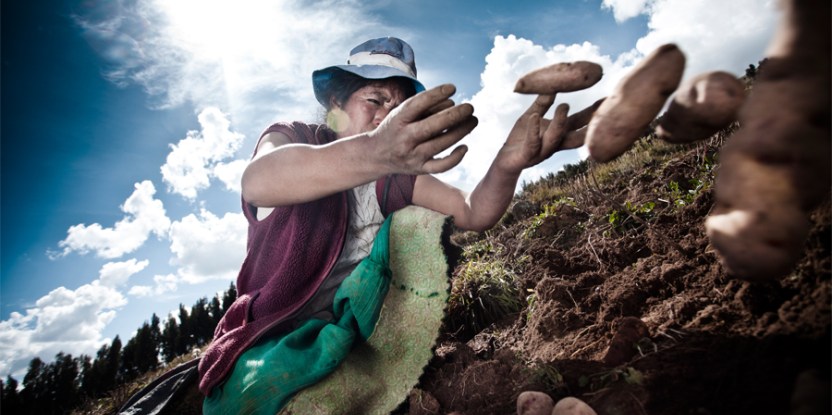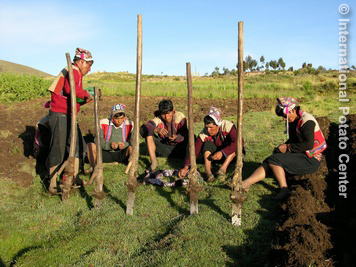
LIMA, Peru—As a warming climate shrinks the land area suitable for growing potatoes, Quechua farmers high in the Peruvian Andes say the change is a sign that Mother Earth is angry, said Alejandro Argumedo, director of the non-profit ANDES Association.
In the “Potato Park” near Cusco, Peru, farmers have teamed up with scientists to protect the potatoes so crucial to their families’ diet, Argumedo said at the 2014 Global Landscapes Forum organized by CIFOR, the United Nations Environment Program (UNEP) and the UN Food and Agriculture Organization (FAO) on the sidelines of the annual UN climate change conference in Lima, Peru. The event drew more than 1,700 people from 90 countries, including country climate negotiators, ministers, CEOs, indigenous leaders, civil society leaders and researchers.
Andean farmers have been adapting to climate extremes, including heavy rains and droughts triggered by El Niño, for millennia, but changes have come faster in recent decades, Argumedo said.
The farmers grow potatoes at high elevations where cold temperatures keep pests and diseases in check. Over the past three decades, however, rising temperatures have forced them to plant farther and farther uphill.
In 1982, the lowest fields were at about 3,900 meters above sea level; this year, they were 200 meters higher, according to Dave Ellis, head of the gene bank at the International Potato Center (known by its acronym in Spanish, CIP) in Lima.
The farmers have noticed other changes in recent years, including retreating glaciers on nearby peaks, changes in precipitation and more extreme weather.
Six communities joined together in 2000 to create Potato Park, combining farming with other traditional activities and with ecotourism for a variety of income sources.
They also set out to conserve their native potato varieties and to recover the genetic diversity that had been lost over the years as they grew fewer varieties of native potatoes.
CIP has provided about 400 varieties from its collection. In return, the communities have donated samples of more than 200 varieties to the center.
‘LIVING LABORATORY’
Scientists at CIP are also studying the effects of climate change on native potatoes, training farmers to work with them in the research and to train members of other communities.
For three years, they have planted plots at 100-meter elevation intervals. The scientists and farmers work together on the planning, planting and harvesting of the plots, and analyze the results together.
Among the findings: the farmers had already been improving their potatoes, selecting for pest resistance and tolerance of extremes such as drought and frost. Their choices of varieties have been similar to those of CIP scientists, said Ellis, who called the Potato Park “a living laboratory.”
That is not the only place where farmers are testing new techniques to conserve or improve traditional crops and protect food security, said Krystyna Swiderska of the International Institute for Environment and Development (IIED) in London, who is studying 64 villages in risk-prone areas already affected by climate change in China, India, Kenya and Peru.
Switching from hybrid to traditional crop varieties, breeding new varieties and planting a combination of drought-resistant and fast-growing varieties to reduce risk from extreme weather are among the strategies used by farmers in the four countries.
“Local capacity to innovate is really crucial for resilience,” Swiderska said.
We want you to share Forests News content, which is licensed under Creative Commons Attribution-NonCommercial-ShareAlike 4.0 International (CC BY-NC-SA 4.0). This means you are free to redistribute our material for non-commercial purposes. All we ask is that you give Forests News appropriate credit and link to the original Forests News content, indicate if changes were made, and distribute your contributions under the same Creative Commons license. You must notify Forests News if you repost, reprint or reuse our materials by contacting forestsnews@cifor-icraf.org.
